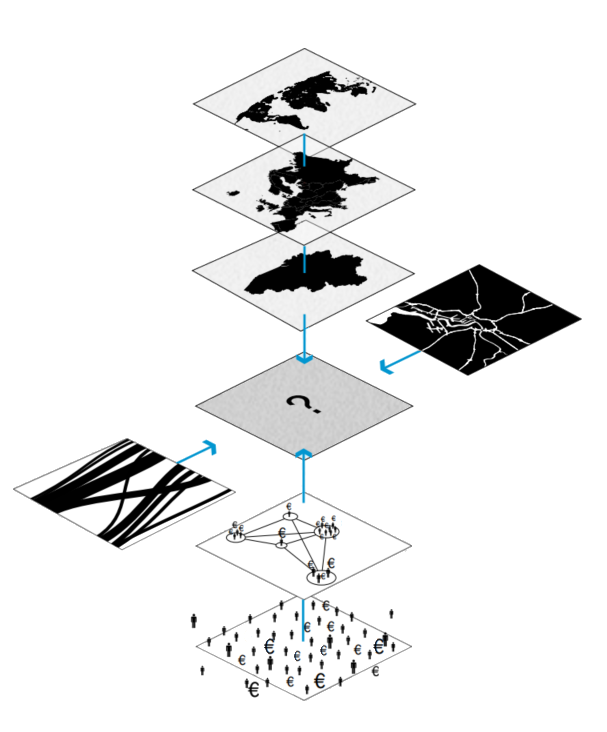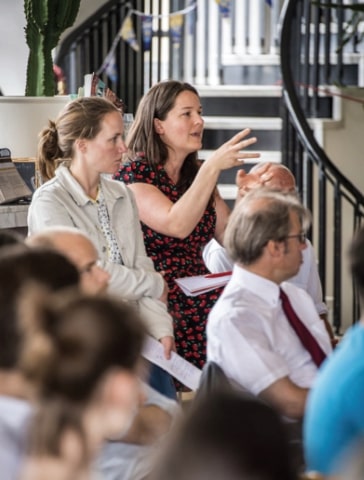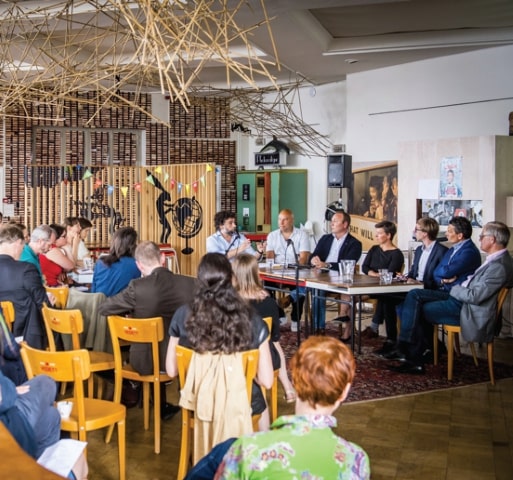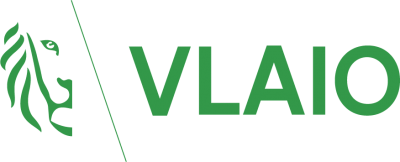Topics
We organise our actions in six thematic & strategic agendas:
Strategic Agendas:
Bio-economy
Circular Construction
Chemicals/Plastics
Manufacturing Industry
Food Chain
Water Cycles
Seven leverages provide additional support:
Leverage effects:
Lever Policy Instruments
Lever Circular Procurement
Lever Communication
Lever Innovation & Entrepreneurship
Lever Financing
Lever Jobs & Skills
Lever Research
What, why and how?
Why are we pursuing a circular economy?
Future visions 2050
How do we see our circular future?
About our management
Who steers what at Flanders Circular?
More Than Just A Flows Audit
Cities and regions can't function without constant flows of materials, water, sediment, energy, food, air, biomass, data, and so on. Metabolic studies research these flows and map them, which is how heat maps, potential maps, flow charts, etc. are created. In the past, these studies were often limited to a kind of audit exercise with input and output data of flows and stocks. Their objective was chiefly to optimise individual flows. While there’s nothing wrong with this, a city is still made up of more than the sum of its individual flows. Models, analyses and indicators are needed and can raise awareness; however, they rarely generate insights into the 'spatial planning footprint' of flows, daily dynamics and management, accessibility of flows, and how governments and other players can take action on this front.
Taking The Context Into Account
It’s for that reason that circular metabolism studies should explore the context of specific areas in which those flows occur. Thanks to the link between research and design practice current studies take this into account. Different agendas (citizens, public authorities, businesses, territory, etc.) are systematically taken into account, and local knowledge and valuable initiatives are inclusively integrated (see figure). As a result, these studies are always tailored to specific places, on a community scale (place-based). In our opinion, that’s really what working with circular metabolism is all about.
Flow Chart: It's More Than Just Flows

Why Are We Doing This?
Circular metabolism is a useful metaphor for research, design and policy. Through metabolism, everyday aspects of urban life are reassessed. Where does the water running from the tap come from? What happens to my rubbish bag after I put it out on the street? The metabolism doesn’t just show how urban life works but also exposes the financial, social and environmental costs borne by the city (source: Agora). And that’s why Circular Flanders and its partners stimulate research and encourage new practices inspired by urban metabolism at various locations throughout Flanders and Brussels.
Master Classes
We organised three master classes, 'Designing With Flows’, in the slipstream of BOZAR’s A Good City Has Industry exhibition, where the results of the Atelier Brussels at the International Architecture Biennale Rotterdam (IABR) were presented.
The master classes were a collaboration with the Flanders Environment Agency (VMM/MIRA), the Flemish Government Architectural Team, FABRICations and the non-profit organisation, Metabolism of Cities. Their primary purpose was to familiarise participants with the theory, concept and practice of ‘circular metabolism’. In this relation, we were also interested in starting and contemplating a shared agenda, while also seeking to foster a partnership made up of incredibly diverse actors.
'Serendipitous Outcomes'
The debate set in motion by the master classes resulted in some serious, rather serendipitous outcomes:
Publications and Articles
- publication ‘Designing the Future’
- special issue Urban Metabolism (AGORA, 2018)
- articles ‘Interpreting circularity. Circular City Representations Concealing Transition Drivers’ (KU Leuven, 2018) and ‘Circular Area Design or Circular Area Functioning? A Discourse-Institutional Analysis of Circular Area Developments’ (TU Delft, 2019)
Additional Research/Academic Work
- design research 'Buda Metabolism (Northern Brussels Periphery)' and 'Metabolism Antwerp'
- PhD dissertations, such as Circular Economy Transition in Flanders. An Urban Landscape Design Contribution (KU Leuven, 2019)
- the establishment of a Circular Metabolism Chair (ULB, 2018)
Communities and Seminars
- start-up of a Flemish-Brussels-based Circular Metabolism Community
- seminar series ‘Cities in the metabolic loop’ within the metrolab.brussels framework
- Brussels part of an international seminar series Urban Metabolism in Policy and Practice (Cape Town - Beijing - Brussels), a collaboration between Metabolism of Cities, the ULB Urban Metabolism Chair, Circular Flanders and UN Environment
Triggering Debate
Review the lectures, interviews or download the summary report:
Antwerp, The Guinea Pig
The design research into the 'Metabolism of Antwerp, City of Flows' was set up in 2016 by a unique coalition of the Flemish Government Architectural Team, the Department of Environment, OVAM, the City of Antwerp and the Port of Antwerp. The project addresses the question of how goods, biomass, waste, energy, people, air and data travel in Antwerp. How do these flows affect the the quality of life? Where can the most opportunities be found? On the one hand, the project needs to feed into the update of the Antwerp Strategic Spatial Planning Structural Plan (s-RSA for short). On the other, the city can function as a test case for investigating how we can close loops on a larger scale and evolve towards sustainable, circular cities

Flows > Challenges > Solutions
The city of Antwerp itself requested the metabolism study to improve its consideration of the many flows in and around the city. Eight key flows were addressed: energy, water, food, air, goods, materials, people and 'biota' (plant and animal life of the region). Appointments and indepth interviews with experts, internal brainstorming sessions with city services, supplemented by desk research and historical analyses all contributed to the study of these flows. For each flow, the infrastructure and its use or role was mapped. The region, city and street’s main challenges were also sketched as part of the overall picture. In this way, a transition was made from facts and analyses to challenges and promising projects.
Promising projects often respond to multiple flows simultaneously. Four crossflow themes were highlighted: heat (energy transition), air quality (healthy living), circular building materials (a circular economy) and drinking water (climate adaptation). For each theme, a project was developed in detail, including what its relevance is to Antwerp, how to implement the project and who should be involved.
The evolution towards a circular city is still at an early stage, but little by little, it’s starting to take shape. In the Inspiration Note for the new Antwerp Strategic Spatial Planning Structural Plan, for example, the 'short-distance city' has become an important principle. Circular entrepreneurship and flow management are important starting points for new policy and concrete urban projects.

City Debates
One of the research project's unique characteristics is that, in addition to the usual expert sessions, public 'city debates' were also organised to gather input. Members of advocacy groups, administrations at different levels, business managers, researchers, students, designers and interested citizens participated in these debates.

© Frederick Beyens
.png)

















